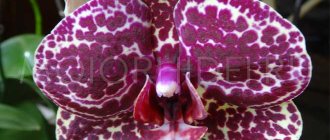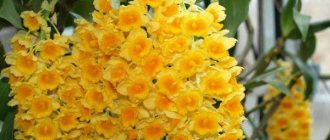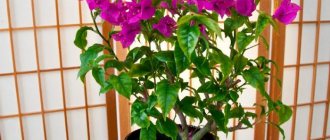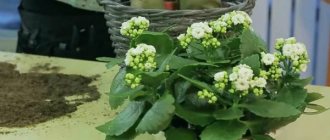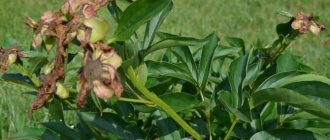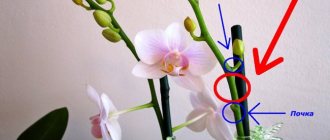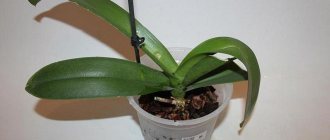Hyacinths bloom beautifully and look great in a pot, but the question often arises of what to do with hyacinths after flowering.
Dear readers! For you, we have created communities on social networks in which useful articles and interesting ideas are published several times a day! Subscribe and receive useful content in a convenient format!
The simplest option for what you can do is to throw out the bulb, but it is much nicer to give the flower a second life.
We will tell you in today's article what actions need to be performed with the flower after all the petals have fallen.
Where to start caring for hyacinth in a pot after flowering
If you provide the hyacinth with proper care, then there is a high probability that you will soon be able to see the flowering process again.
First of all, you should try to save the rhizome (but not the plant itself above the ground) by carrying out simple actions after flowering.
As soon as the hyacinth has faded, it, along with the fading leaves, must be taken out of the store container and shaken with an earthen ball. In this case, you should pay attention to the appearance of the bulb and its bottom in order to recognize rotting.
Then you need to separate the bottom part.
Making a decorative composition
The technology of forcing hyacinths is used to decorate the interior. By observing special maintenance conditions, the bulbs are forced to bloom at the right time. Usually they are placed in separate small containers. To create a composition of several plants, the bulbs with roots and soil are removed from individual containers and placed in a common one. A 2-3 cm layer of sand is poured onto the bottom as drainage, and elements of the composition are placed on top. The free space is covered with a substrate of peat and sand with the addition of compost. The bulbs are covered 2/3. The soil surface is decorated with sphagnum.
Step-by-step instructions for caring for hyacinth at home
To revive hyacinth and continue to enjoy its blooms, you must follow certain recommendations. The first method includes the following steps:
- As soon as flowering has stopped, do the following: cut off the peduncle (leaving about 12 cm), leave the leaves.
- Watering should be gradually reduced to a minimum. It is necessary to water only when the soil dries out. But watering should not be as abundant as with a flowering plant, but with longer breaks.
- Over time, the leaves will turn yellow. Carefully complete watering and wait until the leaves are completely dry.
- Once the leaves are dry, they should be trimmed and the bulbs removed. When removing the head from the pot, you must be careful and free it from the soil.
- It is recommended to dry the bulb in a warm, dry and ventilated area. Thus, planting material should be stored until the next planting. For this purpose, you can choose a cardboard box or other container, but not in film.
Before sending the bulbs to dry, it is recommended to process them. Doing this in the refrigerator is prohibited.
The second way to care for faded hyacinth:
- Peduncles with faded flowers are cut off. There is no need to do too much pruning; it is recommended to leave about 12 cm. The leaves should dry out on their own. The plant should smoothly enter the dormant phase.
- Now you need to move the plant to a larger container. The earthen lump must be left behind. In such conditions, the bulbs will develop on their own, and young plants will appear next to them.
- The plant should be left in a bright and ventilated area. After transplantation, hyacinth should be watered in doses. There is an opinion that this must be done through a pallet. A couple of weeks after transplanting, you can add some fertilizer to the soil.
- Now you need to decide: the plant will remain in a pot on the windowsill, or it will migrate to open soil in the garden bed.
- When the leaves are completely dry, stop watering. The bulb is freed from the soil, cleaned, dried and stored until it is time to plant it in the ground.
- Storage is allowed in the pantry or under a cabinet. The storage location should be dark and not hot. The bulbs can be stored for up to three months.
Varieties
Hyacinth is a herbaceous plant, perennial. Belongs to the lily family. About 400 varieties are known. Grows up to 40 cm. The bulb produces a thick peduncle with inflorescences of bright flowers, collected in spike-shaped racemes. The leaves are narrow and linear. Flowers come in different shades: white, blue, pink, orange and coral.
Hyacinth/Hyacinth
Today, the most popular varieties are Anne Marie, Queen of Pinks, Madame Hutzbenzak, Bismarck, and Grand Lila. The French-Roman variety Festival is unusually beautiful; it produces many flower stalks from the bulb.
How to care for a plant when it has bloomed
If we talk about planting in the ground, then it is permissible to leave the bulbs in the ground in one place for five years in a row. After this time, they will become larger, and they can be dug up and planted with children.
But experienced gardeners advise not to leave flowers in the ground for many months, since after winter they may stop blooming. It is recommended to remove the bulbs, sort, inspect, disinfect and store in a cool and dark place.
Digged or purchased bulbs must first be dried. This should be done indoors at a temperature of about +23 degrees. After this, they need to be shaken off the ground and the unnecessary husks removed. If small onions appear, they should be separated carefully.
After this, the bulbs are distributed in a cooler place. In this case, the temperature should gradually decrease. By the end of summer, the bulbs should be stored at a temperature no higher than +18 degrees.
There should not be high humidity in the room; good ventilation should be provided. At the end of summer, the bulbs are planted in the ground for the winter.
Autumn planting
The flowerbed is prepared in advance, a month or two in advance. The soil is well dug to a depth of 20-30 cm, since the roots of these plants go deep. Adding compost or rotted manure to the soil for digging (but no later than a month before planting) has a beneficial effect on flowering. You can also refill the soil with autumn complex fertilizer.
In central Russia, it is recommended to plant hyacinths in the first ten days of October. If planted early, especially if the autumn is warm, hyacinths may begin to grow and die from frost. And 2-3 weeks before frost, the bulbs will have time to take root, but not germinate. For this, the optimal planting period is considered to be the end of September - the beginning of October.
In the fall, as a rule, and September, the bulbs are planted in the ground to a depth of 1.5 - 2 cm. In general, it is believed that the planting depth of the bulb depends on the diameter. Large specimens are buried 18-20 cm, measured from the bottom. On clay soils, planting should be shallower. You can pour a 2-centimeter layer of sand at the bottom of the hole; hyacinths like it.
The bulbs are lowered into the hole bottom down, sprinkled with soil about half the bulb, and then with soil.
Care in open areas
Now let's talk about what to do with hyacinths after flowering if they grow right in your open ground.
After the hyacinth has been planted in the ground, it must be regularly weeded, watered, fertilized and loosened. It must be borne in mind that hyacinths do not like weeds. As soon as sprouts begin to appear, you need to start fertilizing the soil. It is better to give preference to saltpeter (27 grams per 1 square meter).
You should fertilize the soil again when the buds appear. The spaces between flowers in one row or between rows are fertilized. After fertilizing has been applied, it is necessary to water the crops.
The flowering period of hyacinths quickly ends, and after it it is necessary to continue to moisturize the root system. In order for the bulbs to become stronger after flowering, you must continue to fertilize and water regularly.
How to restore hyacinth after forcing
When a crop is grown and forced to bloom at the end of winter, this is called forcing. At the same time, the hyacinth weakens, and the plant requires a lot of strength.
IMPORTANT! The gardener must slowly put the flower into a dormant state so that the head gets stronger and new buds form for flowering.
You need to trim the peduncle with a sharp knife, previously disinfected. Then you need to remove the hyacinth from the pot along with the soil without damaging the roots.
Now the bulbous rhizomes need to be dried in a dark and cool place until the end of summer. It is strictly not recommended to plant the crop in any container at home.
Hyacinth should get stronger after forcing. It will bloom again in a year or two in open areas.
Hyacinth flowers - varieties: aquatic, oriental, mouse muscari, legume climbing, wild
hyacinths of different colors in a large pot
An aquatic species of hyacinths native to tropical America. It grows only in water, with flowers and leaves rising above its surface, and half-meter roots completely immersed in it.
Blooms in shades of pink, purple and blue. Water hyacinth has become widespread due to its interesting properties of purifying water from harmful microbes and contaminants and absorbing harmful substances. It can be found in reservoirs in our latitudes, as well as in aquariums.
Oriental hyacinths have inspired breeders to create many subspecies of this plant in different shades and flower shapes.
Oriental hyacinth comes from Syria, Turkey, and Libya. In the wild, it is found in pink, purple and milky colors. The flowering period of the plant is accompanied by a pleasant strong aroma.
Mouse muscari is a favorite of flower beds and gardens. You can easily recognize it by the shape of its blue or purple flowers. They:
- look like barrels
- small
- densely and in large numbers located on the peduncle
This type of hyacinth is unpretentious in care and is generous with its annual offspring. Each parent bulb surrounds itself with up to 15 baby bulbs.
Bean climbing hyacinth is loved by gardeners who are fond of liana-like plants. In a number of African and Asian countries, its fruits are eaten; in all others, they enjoy the beauty of the leaves and flowers. The plant is an annual, but easily takes root and grows.
Wild hyacinths, or proliskis, are common in European countries. You have collected them more than once in early spring in clearings and forests.
Externally, wild hyacinth is a rosette of long leaves and stems pointed at the ends with 4-10 bell-shaped flowers. Shades of flowers are blue, purple, white. This type of hyacinth has no smell.
Is it worth digging up hyacinth bulbs for the winter?
It is imperative to dig up these crops for the winter. There are several reasons for this:
- Their shell is too thin and does not protect against excessive moisture. Even normal precipitation can lead to rotting of the crop.
- Rodents love to eat these plants.
- Even if the plant overwinters, the second flowering will be sparse, and the crop itself will become weakened.
How to plant hyacinth in the fall after flowering
Hyacinths should be planted no earlier than the end of September.
IMPORTANT! For these flowers, you need to choose an area where the sun falls. There is no need to plant the crop under any seedlings, since in this case they will not have enough valuable substances for development.
The soil should be nutritious and loosened. A small amount of sand should be poured into each hole for planting material. After planting the bulbs, they need to be sprinkled with soil and fertilizers. If the depressions were wet, then there is no need to water the crops after planting.
What not to do after hyacinths bloom
After hyacinths bloom, you cannot immediately plant them in the ground and leave them there until next year. They will not survive with such actions.
You should also not dig up crops after heavy rainfall or during hot weather.
IMPORTANT! If the plant is overtaken by disease or has too much moisture, the leaves begin to turn yellow. It is necessary to stop watering, dig up the plant along with the soil, move it to a wooden container and leave it in a ventilated area.
Answers to frequently asked questions
Let's look at the most frequently asked questions:
Why doesn't hyacinth bloom?
You need to pay attention to the soil. For example, it may be too wet or not fertilized enough. Poor watering also adversely affects flowering.
What to do with plant babies?
They need to be carefully separated from the older bulbs and dried. After this, you can plant it in another pot or in open ground.
How to get big flowers?
In order for the children to be of good size, it is necessary to loosen and hill up the soil. This will be an additional barrier from the scorching sun on hot days.
When is the best time to transplant?
It is recommended to do this at the end of September. Plants need to take root before cold weather. If you do this at the end of October, for example, then the crop will not have time to sprout a sufficient number of roots, which means it may die in the winter months.
When is the best time to dig up hyacinths?
This can be done when flowering has ended, the leaves have turned yellow, and from early to mid-summer.
When should you dig hyacinths out of the ground?
This should be done as soon as the leaves begin to turn yellow. Otherwise, the leaves will turn yellow, dry out and fly away due to the wind. In this case, the heads are difficult to find.
Diseases and pests
Like any other plant, this flower can be affected by various diseases and pests. The most common ones when growing hyacinths in pots are the following.
Yellow bacterial rot
When the disease occurs, the leaves of the plant are affected, and then the bulbs (orchid in the photo)
The disease is accompanied by liquefaction of the bulb, a pronounced unpleasant odor, and cessation of plant growth. At the initial stage of yellow rot infection, gray spots appear on the leaves.
Parasitic blossom end rot
The disease is caused by pathogenic microorganisms found in contaminated soil. Signs of the disease:
- brown small depressions on flowers and leaves;
- the tips of the leaves become covered with mycelium, become thinner and destroyed;
- the roots rot.
The decay process accelerates as the air temperature rises.
Mosaic
First the leaves wither, and then the whole plant.
Chaotically located elongated light green spots appear on the leaves and flowers. The affected areas begin to turn yellow and dry out. Plant growth slows down. Possible death.
Gray rot
Gray rot leads to the death of bulbs (pictured is a tulip bulb)
Most often it affects plants during the period of early growth. The disease is characterized by the formation of yellow spots, which gradually increase in size and acquire a brown color. The roots begin to rot quite quickly. The plant dies.
Pests
One of the parasites of hyacinths is tobacco thrips.
When grown outdoors, the most dangerous pests for hyacinths are aphids and thrips. They take sap from the plant, which leads to the drying of flowers and leaves. To prevent damage, spray with aphicides. The most effective are Fitoverm, Akarin, and Accord.
Plants grown in pots and outdoors may suffer from nematode damage. These parasites come in two types: stem and gall. Most often the former are found, parasitic on all parts of the plant, above-ground and underground. At the same time, the bulbs soften and hyacinth growth gradually stops.
There are no radical measures to combat these parasites. The only drug on sale that nematodes are sensitive to is Fitoverm. It is used as a therapeutic and prophylactic agent. Before planting, sprinkle the powder of this preparation on the soil in a thin layer and mix it with the soil to a depth of at least 15 cm.
Possible problems when growing hyacinths: table
A novice gardener will be helped by a table of possible mistakes when growing hyacinths in a pot and how to correct them.
| Problem | Cause | Solution |
| Increase in green mass in the absence of flowering | small onion | Select a bulb with a diameter of at least 5 cm and plant it |
| Different flowering periods for plants of the same variety when planting several bulbs at the same time in one pot | All bulbs planted in one container should be approximately the same diameter | Choose bulbs with a diameter of at least 5 cm |
| Slow growth, poor flowering | The “cold” period was not maintained before planting the bulb; the pot is moved to a warm place before the first shoots appear | Properly prepare a new bulb for planting, following the instructions above. |
| Deformed or missing flowers | The temperature during the “cold” period was above +9°C | Properly prepare a new bulb for planting |
| Yellowing of leaves, slow growth | Insufficient watering, poor lighting | Water the plant in a timely manner, move the pot to a well-lit place |
| Falling buds, rotting of the bulb | Excessive watering with water entering the leaf axils and buds | Water the plant at the root, at the edge of the pot |
